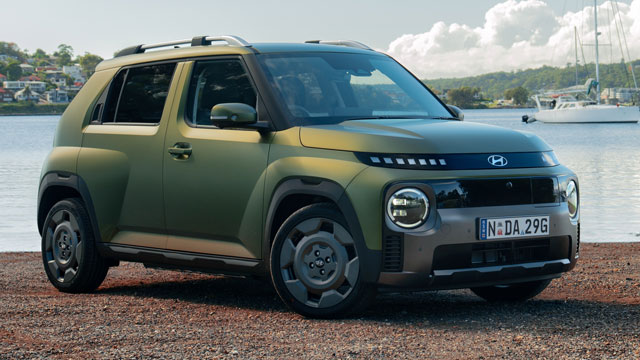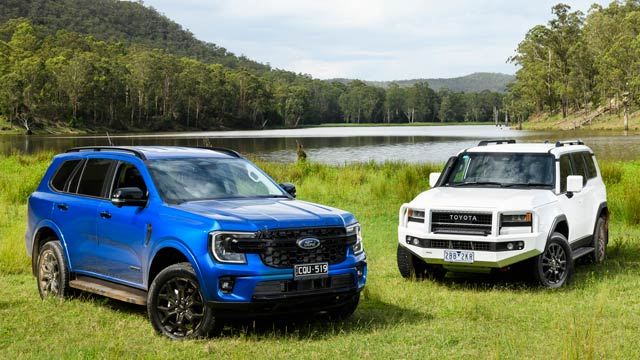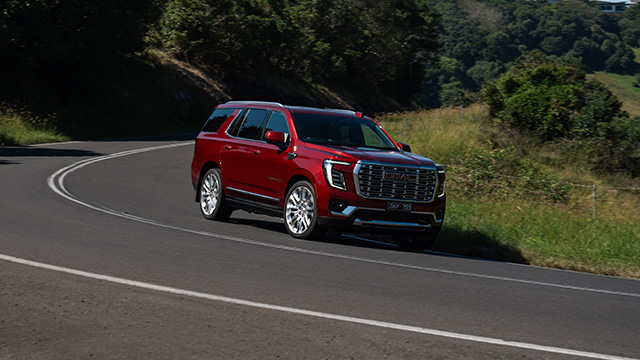
Buying an SUV in Australia nowadays is a little like turning up to the buffet breakfast at a five-star resort: there’s just about something for every appetite.
From the very original iterations of the SUV genre only a few decades ago – ala Range Rover, Toyota RAV4 and Jeep Cherokee – the segment has exploded in popularity in recent years, overtaking traditional passenger car sales and diversifying into umpteen sub-categories.
For prospective buyers, it begs the question: which size is most suitable? Let us break it down for you.
Loosely speaking, an SUV’s size is determined in Australia by Federal Chamber of Automotive Industries (FCAI), the industry’s main representative body.
The FCAI uses a ‘footprint’ segmentation criteria to determine which ‘size’ class an SUV lives in. The size is calculated by multiplying the width of the vehicle, by the length of the same vehicle. This determines a footprint measurement in millimetres.
In a nutshell:
*Source: Federal Chamber of Automotive Industries

As per the FCAI’s guidelines, a small SUV is one which measures less than 8100mm by the segmentation criteria. However, in real-world terms a small SUV can mean much more.
This segment is the one which has grown fastest over the past 10 years, building on our SUV fascination by offering different shapes and sizes of the same basic template.
In 2025, your choices of small SUV can included popular options like the Mazda CX-3, rugged off-roaders like the evergreen Suzuki Jimny, or even a growing band of EV proponents like the new Hyundai Inster (pictured above).
Then there’s the premium small SUV crop priced north of $45,000, headed by the likes of the BMW X1, Volkswagen T-Roc, Audi Q3 and others.
In short, small SUVs are best suited for young couples (sans children) or empty nesters, offering inherent efficiency and around-town pep, while also playing to the oft-referred high ride height that has popularised the humble SUV.

The FCAI classes a medium SUV as one which straddles a footprint measuring between 8101mm and 8800mm.
In short, this is the most popular class of SUV in the country, offering a breadth of capability which includes some family-friendly options, sensible EVs and the go-fast variety.
In Australia, the top medium SUVs currently on sale include the ever-popular Toyota RAV4, the Mazda CX-5, the Hyundai Tucson and the Kia Sportage.
If your budget is north of $60,000, popular choices include the Tesla Model Y, Kia EV5 (both pictured above) and BMW X3.
With flexible seating and moderately sized boot areas, the medium SUV will happily accommodate a family of four, however any additional passengers usually dictates moving into the next class up.

Yep, the trusty family wagon. As the FCAI’s calculation of a large SUV suggests (a footprint between 8801mm and 9800mm), large SUVs are a hugely popular choice for families, owing to their cavernous interior spaces and predominantly three rows of seating.
Popular choices in Australia include the Toyota Kluger, Mazda CX-9, Hyundai Santa Fe and Kia Sorento.
This segment also includes body-on-frame (or ladder frame) options, like the Ford Everest, Toyota Prado (both pictured above) and Isuzu MU-X.
The Large SUV field is also home to some of the country’s most popular Euro options – priced above $80,000 – like the BMW X5, Audi Q7, Volkswagen Touareg, Land Rover Defender and Range Rover Sport.
In short, if space is a must for a new vehicle, the large SUV is likely to rate quite highly within your buying parameters. And in 2025, there’s more choice than ever before.

In very basic terms – and if we want to generalise - there are two types of large SUV buyer: the type wanting to tow a caravan regularly (or perhaps around the country), and those who simply like having a lot of space.
This much is shown by the types of vehicles that head up the list of large SUVs in this country. Think Toyota LandCruiser wagon, Nissan Patrol or Land Rover Discovery. Or at the even higher end of the spectrum, the BMW X7, Lexus GX and Mercedes-Benz GLS.
At the very top of the tree you have new entrants like the GMC Yukon Denali (pictured above). It goes well beyond the FCAI’s Upper Large SUV definition (greater than 9801mm) – measuring in with a mammoth 10,985mm footprint.
Does anyone truly need an Upper Large SUV in Australia? That’s an argument for another day. But the short story is there are a growing legion of options for those who desire one.